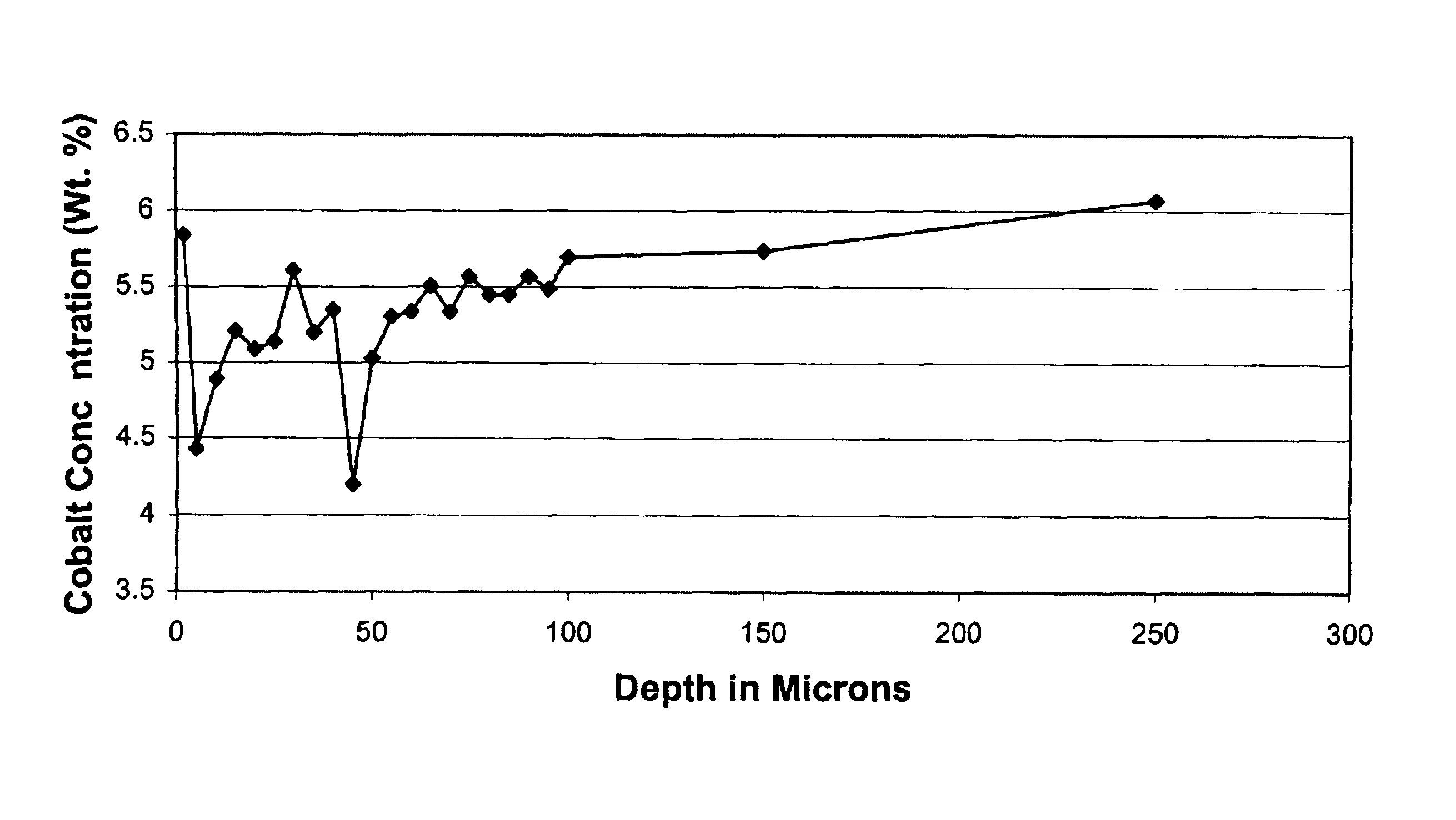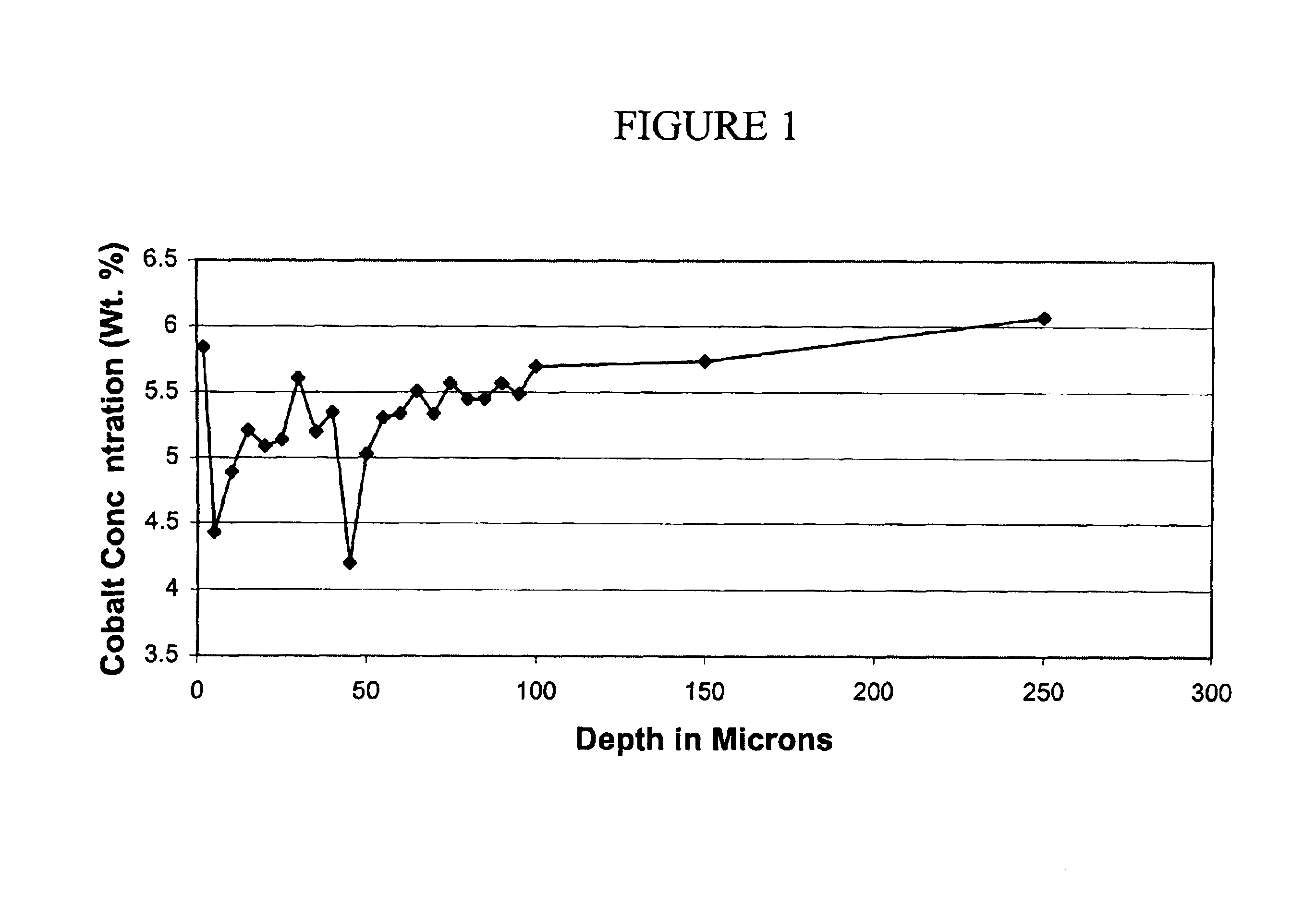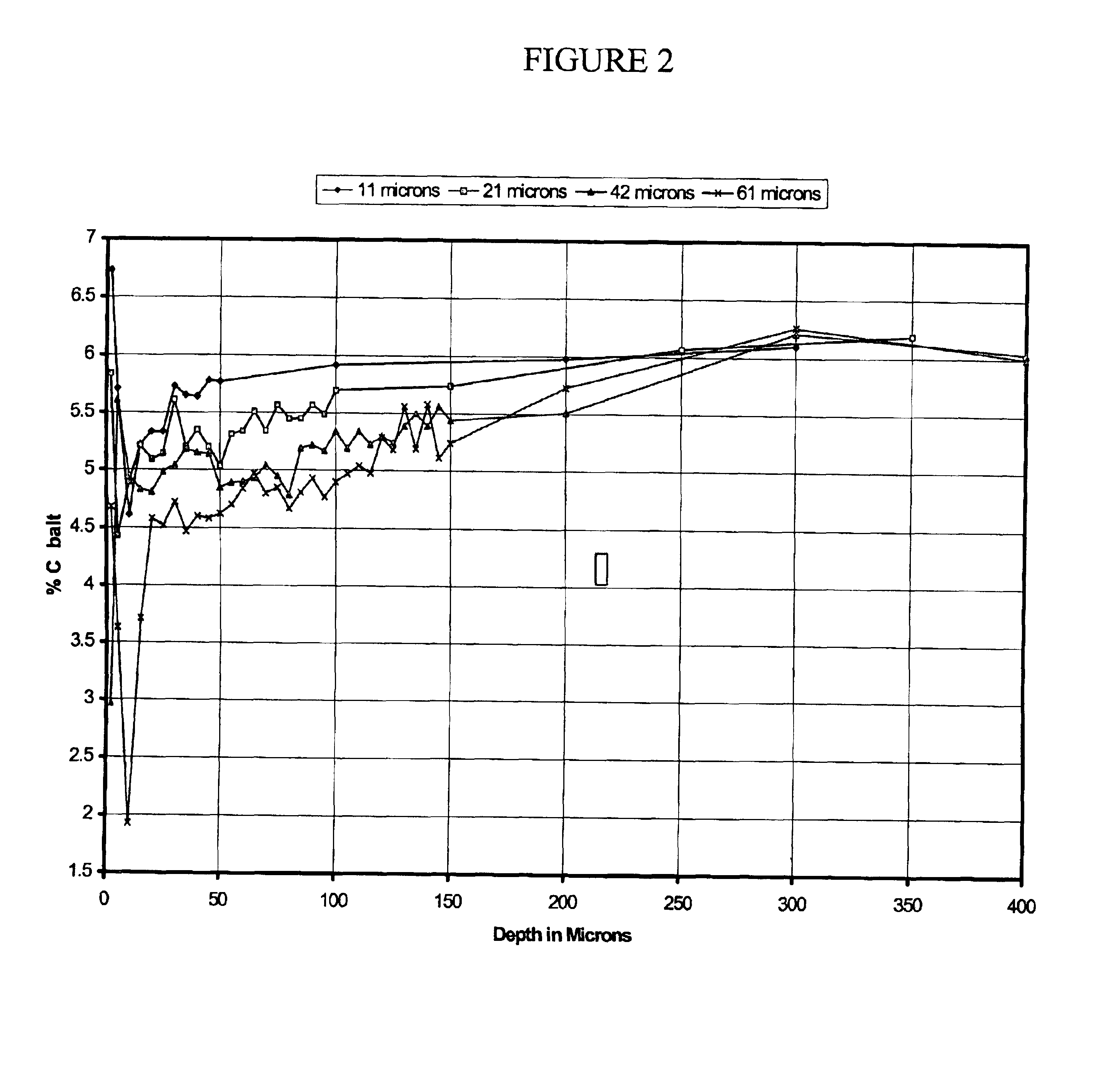Cemented carbide article having binder gradient and process for producing the same
a technology of cement carbide and gradient, which is applied in the field of cement carbide material, can solve the problems of warpage, loss of geometric features, warpage, and a reduction in hardness, and achieves the effect of reducing hardness, warpage, and reducing hardness
- Summary
- Abstract
- Description
- Claims
- Application Information
AI Technical Summary
Benefits of technology
Problems solved by technology
Method used
Image
Examples
example 1
[0029]Step 1: Groups of sintered cemented carbide inserts containing <0.5 weight % cubic carbides and 6 weight % cobalt, were treated with freshly prepared 0.05 M ferric chloride solutions for periods of 2 and 4 hours respectively. Upon examination, the cobalt binder in the inserts was found to have been etched away to depths of 20±1 microns and 37±2 microns respectively. A second set of cemented carbide inserts containing <1 weight % cubic carbides and 12.3 weight % cobalt was top and bottom ground and then etched to depths of 21±1 micron and 34±2 microns using freshly prepared 0.05 M ferric chloride solutions for periods of 4.5 and 9 hours respectively.
[0030]Step 2: Inserts selected from each group prepared in Step 1 were heated in a furnace to approximately 1100° C. for 100 minutes in a vacuum. A second batch of the selected inserts was heated in a furnace to approximately 1250° C. for 100 minutes in a vacuum. The heat-treated inserts were then cross-sectioned, polished and exami...
example 2
[0031]Inserts prepared according to Example 1, Step 1, were heated in a furnace to approximately 1300° C. for 100 minutes in a vacuum. The heat-treated inserts were examined as in Example 1, step 2. Partial filling of voids in the substrate and some reduction in the cobalt content just below the etched region was observed.
example 3
[0032]Inserts prepared according to Example 1, Step 1, were heated in a furnace to approximately 1350° C. for 100 minutes in 1 torr argon. The resulting inserts had cobalt on the periphery and the edges were distorted.
PUM
| Property | Measurement | Unit |
|---|---|---|
| weight % | aaaaa | aaaaa |
| distance | aaaaa | aaaaa |
| wt. % | aaaaa | aaaaa |
Abstract
Description
Claims
Application Information
 Login to View More
Login to View More - R&D
- Intellectual Property
- Life Sciences
- Materials
- Tech Scout
- Unparalleled Data Quality
- Higher Quality Content
- 60% Fewer Hallucinations
Browse by: Latest US Patents, China's latest patents, Technical Efficacy Thesaurus, Application Domain, Technology Topic, Popular Technical Reports.
© 2025 PatSnap. All rights reserved.Legal|Privacy policy|Modern Slavery Act Transparency Statement|Sitemap|About US| Contact US: help@patsnap.com



